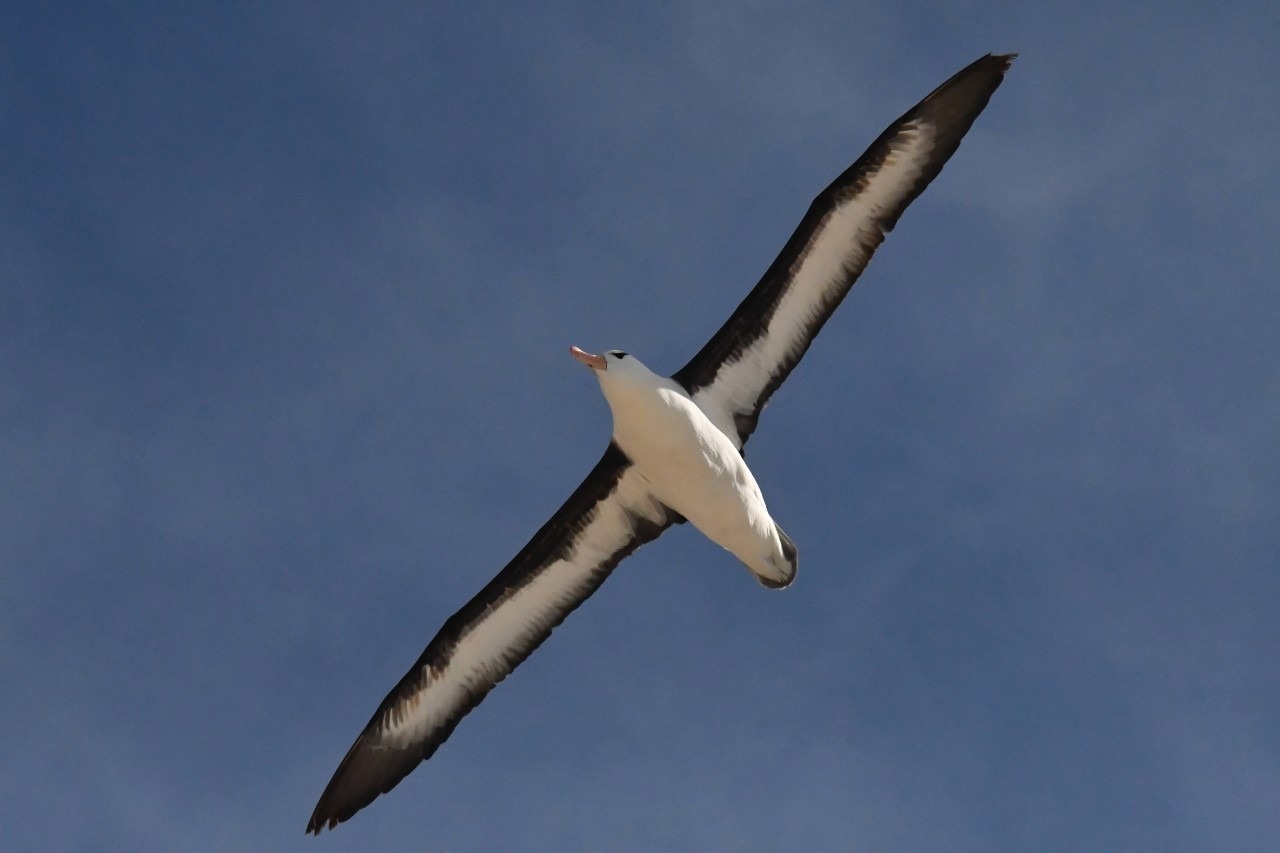
Albatross Flight Secrets Unlocked by UK Engineer

Professor Harnesses Albatross Flight for Drone Innovation
An aerospace engineering professor is drawing inspiration from the remarkable flight capabilities of albatrosses to revolutionise drone technology. This innovative project, funded by the Defense Advanced Research Projects Agency (DARPA), seeks to create more energy-efficient and wind-adaptive unmanned aerial vehicles (UAVs) through biomimicry.
Albatrosses, magnificent seabirds with wingspans reaching up to 11 feet, are renowned for their ability to glide effortlessly across vast oceans for days on end without flapping their wings. Their exceptional flight isn’t solely attributed to their size; it’s their mastery of interacting with wind and gravity that sets them apart. Professor Sameh Eisa at the University of Cincinnati is meticulously studying this phenomenon to develop smarter and more efficient drones.
The core of this research lies in replicating the albatross’s energy-saving flight technique, known as dynamic soaring. This technique enables the birds to extract energy from wind currents by alternating between ascending into faster winds and gliding downwards to gain speed. Eisa’s team has pioneered a novel approach that mirrors this behaviour, which they’ve termed a “natural extremum-seeking system.” This system is based on how albatrosses – and drones modelled after them – identify the minimum and maximum values of pitch, yaw, roll, and airspeed to maintain optimal efficiency during flight.
The Secrets of Dynamic Soaring
The albatross’s flight process is remarkably similar to sailing. They tack into the wind to climb, seeking stronger currents, and then dive, converting that gained energy into speed. At the lowest point of their arc, often skimming just above the water’s surface, they turn back into the wind and repeat the process, all without a single flap of their wings.
This skill is essential for the albatross’s long-distance flights. GPS tracking has revealed that these birds can fly hundreds of miles each week. By the time they reach the end of their natural lives, they will have flown a distance equal to 20 times the distance between the Earth and the moon.
More Than Just Wings
The albatross’s mastery of flight isn’t solely attributable to its wings. “Albatrosses literally have a nose for wind,” Eisa explained. These birds possess highly sensitive nostrils that allow them to detect subtle shifts in wind speed and direction. This sensitivity enables them to fine-tune their movements and maximise efficiency during both the ascent and descent phases of each soaring cycle.
Eisa’s analysis has demonstrated that the energy albatrosses extract from the wind effectively compensates for what is typically lost during flight. As a result, the total energy remains nearly constant throughout each dynamic soaring cycle.
The Challenge of Replication
Eisa, an applied mathematician, tested the birds’ flight behaviour through simulations and discovered that even advanced computer models struggled to replicate their real-time precision. He noted the incredible complexity of the optimisation problem that the albatross solves seemingly effortlessly.
“They are solving an optimisation problem that is unbelievably complicated,” Eisa said. “They make it look natural and easy.”
The underlying algorithm for dynamic soaring is far from simple. “A few seconds of data can take 100 seconds to generate. And albatrosses are doing it in real time with a high level of accuracy,” he explained. “It seems implausible.”
To replicate this level of efficiency in autonomous drones, Eisa explained, they would need to constantly measure changing wind speeds and directions, then calculate the ideal angle of attack and rolling action, making flight control adjustments in real time.
“If we can get closer to how the albatross does it, we can be more efficient,” he said.
Project Albatross: Turning Wind into an Advantage
Eisa and his students are collaborating with researchers from industry, meteorology, and the Massachusetts Institute of Technology on a DARPA-backed initiative called Project Albatross.
Traditionally, wind has been a hindrance for drones. However, this project aims to reverse that perspective, transforming wind into a distinct advantage.
Building upon Eisa’s recent framing of dynamic soaring as a natural extremum-seeking system, the team is designing new real-time flight controls that mimic the albatross’s flight patterns. These controls will be tested, validated, and implemented through experiments with UC’s DARPA industry partners to determine the amount of energy that can be saved compared to standard flight techniques.
Broader Implications
Beyond engineering applications, Eisa believes this work could also deepen scientific understanding of bird flight by confirming the hypothesis that dynamic soaring is a natural example of extremum-seeking behaviour.
“If we can fly more efficiently like birds, we’ll have a brighter future for unmanned aerial systems,” he said.
Associate Dean of Research Gautam Pillay highlighted the project’s significance, stating, “Eisa’s pioneering work exemplifies the transformative impact biomimicry is having on next-generation aerospace systems.”
He further emphasised the project’s importance to national defence priorities, such as endurance and adaptability in contested environments.
Opportunities for Students
Pillay also noted the valuable opportunities the project provides for students, giving them practical experience with research that could significantly impact the aerospace industry.
“The project will give UC students a fantastic opportunity to work on a project with profound implications for the aerospace industry,” he said. “Just as importantly, students will get unparalleled experiential learning opportunities, placing them at the heart of cutting-edge research where theory meets real-world application in collaboration with top-tier institutions and industry partners.”
A Fascination with Flight
For Eisa, the fascination with flight runs deep. Mastering its principles has long been central to his work. He believes that nature has been optimising flight for millions of years of evolution and that learning from it is engineering at its best.



